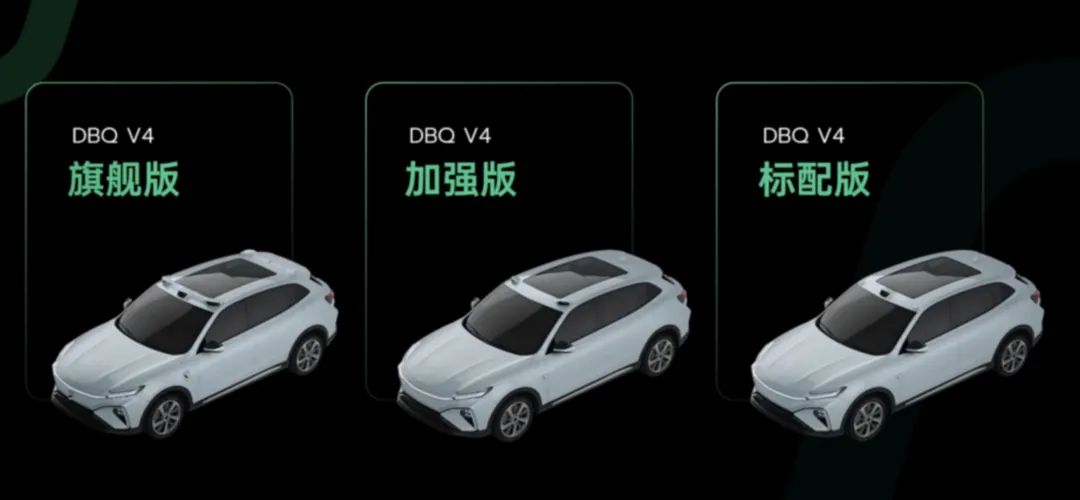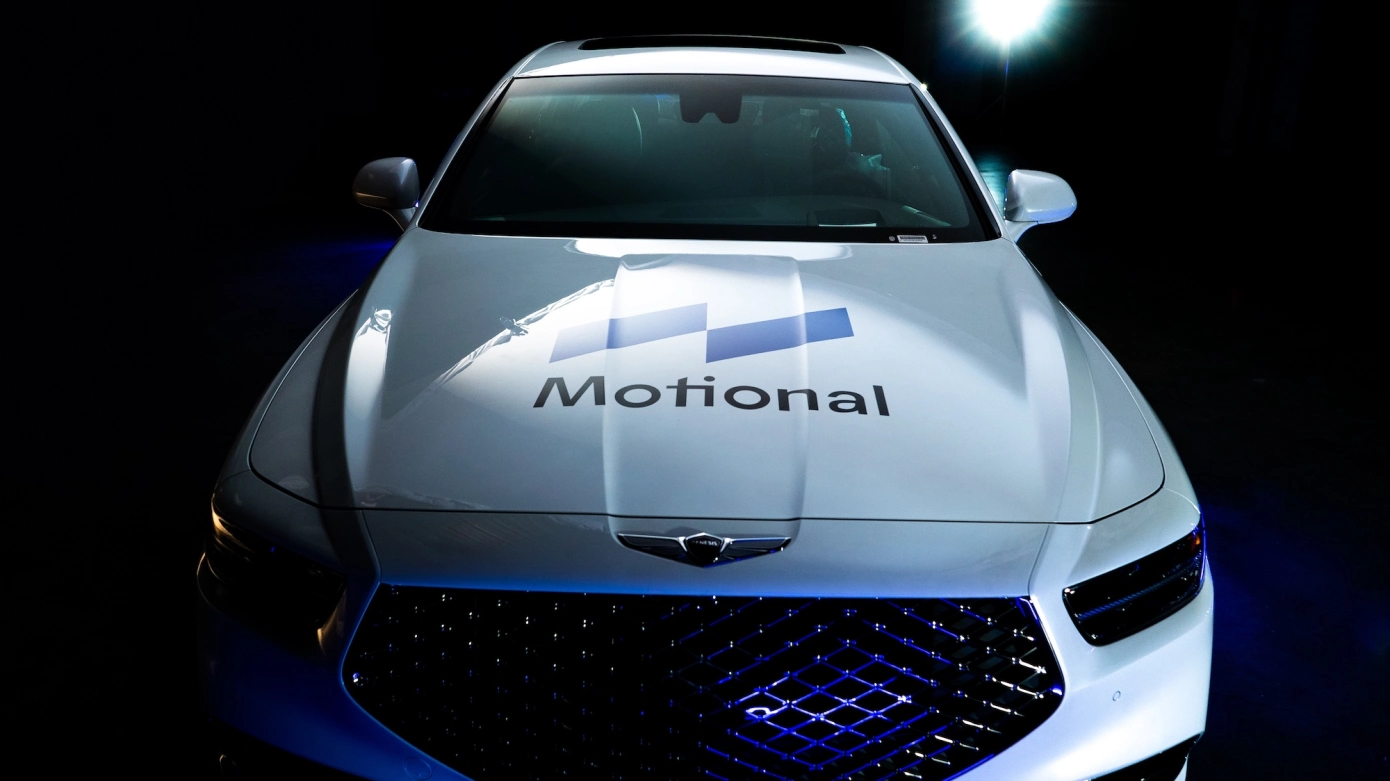Techcrunch News: Modern automotive company Motional, a joint venture between Hyundai and Aptiv for autonomous driving technology, announced layoffs last week.
On November 30th, the company’s employees were informed of the layoff news. Subsequently, the company confirmed the layoff, but did not provide specific numbers. According to multiple sources, as the entire business is being reduced, dozens of employees have been laid off. Motional stated that it will provide severance pay and career transition support to help laid-off employees.
L4’s Winter has arrived
In October, the automated driving world suddenly changed, and the winter came early and fiercely.
Under the fierce attack of the cold wind, trees and grasses were indiscriminately attacked.
Trees have lost their leaves, but for now they’re holding on

On October 26, Mobileye, an autonomous driving company that had just gone public for the second time, rose sharply on the first day but its valuation still fell far short of expectations. Even up to this day, the stock price is only around 31 US dollars (as of November 6), with a market value of 25 billion US dollars, which is only half of the expected valuation when Intel acquired it.
But this is already one of the few remaining achievements of autonomous driving overseas, another is the star enterprise of autonomous driving, Waymo.

Waymo’s days are also not good. In 2018, Morgan Stanley estimated its value at $175 billion, but it fell to $105 billion in 2019. By 2020, Waymo, which had already received multiple rounds of financing, had plummeted to a valuation of $30 billion.
From the peak valuation, Waymo has shrunk nearly six times.
 Microsoft, General Motors, and Honda-backed Cruise had a market value of $30 billion. However, Morgan Stanley analyst Adam Jonas recently stated that Cruise had no value whatsoever in General Motors’ valuation. He even predicted that Cruise will cause a $2 billion yearly loss for General Motors, and this amount will continue to rise in the future.
Microsoft, General Motors, and Honda-backed Cruise had a market value of $30 billion. However, Morgan Stanley analyst Adam Jonas recently stated that Cruise had no value whatsoever in General Motors’ valuation. He even predicted that Cruise will cause a $2 billion yearly loss for General Motors, and this amount will continue to rise in the future.
Whether it is Mobileye, Waymo, or Cruise, they can all receive strong financial support from their parent companies, even if their valuations continue to drop, and there is no risk of bankruptcy in the short term.
However, facing the severe winter, these industry giants still need to tighten their belts. Cutting business lines and exploring new business models have become the necessary path to self-help.
In the harsh winter, the big trees might still survive, but the fate of small grass is really sad.
The blood of small grass is running low, and it may have died
On October 27th, ARGO AI, an autonomous driving company supported by Volkswagen and Ford announced its bankruptcy, and the industry even regarded ARGO AI’s bankruptcy as a significant turning point for the autonomous driving industry.
I have reported on this: After ARGO AI’s bankruptcy, no one debated the reduction of L4 anymore.
Nuro, a U.S. unmanned logistics company, lay off about 20% of its employees because the company found it difficult to raise new funds.
Aurora, a listed autonomous driving company that acquired Uber ATG, currently has a stock price of about $1.3 with a market value of only $1.525 billion. Compared with the peak market value, which has fallen by more than 90%.
To save money, Aurora has not only taken measures such as internal layoffs and pay cuts but has even stopped providing lunches in its cafeteria.
This is enough to show the bleak situation in the overseas autonomous driving market.
The situation of domestic autonomous driving companies is slightly better
The harsh winter of autonomous driving is global, and the cold air has crossed the sea to China.
Although domestic autonomous driving companies have not heard much about bankruptcies, they are still trembling in the cold wind of winter.
The financing environment in 2021 is much better than it is now, but after the change in the overseas listing supervision environment, it has disrupted the listing plans of most domestic autonomous driving companies. This has led to measures such as management shock, personnel loss, and business adjustment.
After the shakeup of its truck division, the head of autonomous driving technology at Pony.ai, Zhenhao Pan, the head of domestic autonomous driving planning and control group Sun Haowen, and Vice President of strategic cooperation and financing Ruixuan Zhao have each established three autonomous driving truck companies.

Meanwhile, there is an ongoing business adjustment within Pony.ai. According to 36Kr, the company’s infrastructure and data department have been reduced, and Shanghai’s Data department, which is affiliated with this department, has been dissolved. Additionally, the infrastructure and data department head at the company’s California R&D center has left.
The listing plan for Wenneng Zhixing is currently uncertain, and even Baidu’s autonomous driving company and Momenta have reportedly been cutting staff.
However, overall, there are still many domestic companies in China, some of which are even thriving in the cold winter season. For example, Qingzhou Zhixing just announced new financing on December 2.
Where is the way out?
In August, Ren Zhengfei said that the next 10 years would be a very painful period in history, with the global economy continuing to decline, and everyone should feel the chill.
In the spotlight of the previous years, L4 companies could obtain huge and sustained funding through financing.
However, over time, the “progressive” approach, starting from L2 and moving up to L4, as exemplified by Tesla, has been applied on a vast scale. The speed of data accumulation among domestic automakers even exceeds that of L4 companies’ fleets.
Especially in the mass production of L2, almost all of the current models from China’s “new three forces, WmAuto Xiolu” are equipped with high-speed navigation functions and visual parking solutions. Even in the marketing of the cars, auxiliary driving functions have been emphasized to increase their intelligent labeling.
With more and more automakers joining the “progressive” approach, L4 companies are now in a more awkward position.
From the current situation, it seems that the winter of autonomous driving is coming, and this explosive theory may be confirmed. However, the fact is that autonomous driving companies that have experienced many years of rapid development and funding are rapidly adjusting their business models under the “calling” of the “progressive” approach, seeking more diverse ways of making a profit and financing to keep themselves going.Here we take Wenyuan Zhixing, QZ Intelligent driving, and Momenta as examples to see what methods they used to obtain financing in the cold winter.
Strategy: Collaborate on L2 Mass Production
When everyone realized the commercial difficulties of L4, the opening and prosperity of the domestic market made the collaborative strategy extremely diverse.
From the perspective of classification, we can classify it as a binding cooperation with excellent suppliers and automakers to promote the landing of L2 products.
The terminology “transformation from L4 to L2” is not precise because these L4 companies are adding L2 functional mass production business lines based on L4. Here, QZ Intelligent driving uses the Horizon chip hardware and its own solution on perception hardware and algorithms.

Even for the needs of different manufacturers, DBQ V4 plan covering L2-L4 scenarios has been introduced. Among them, the standard version of DBQ V4 has the most cost-effective.

The standard version system consists of one lidar, 11 cameras, and five millimeter-wave radars. QZ Intelligent driving claims that the total hardware cost of the standard version system is less than 10,000 yuan.
Wenyuan Zhixing collaborates with traditional Tier 1, such as Bosch, to promote the mass production of L2.
Recently, Bosch announced that it will mass-produce its first customer-oriented high-end intelligent driving solution in 2023. This is the project developed by Bosch in partnership with self-driving technology company Wenyuan Zhixing, covering different application scenarios such as cities, viaducts, and highways.
 Here is also a very interesting company Momenta, they have in-depth cooperation with SAIC-GM, Zhiqi, Lotus, and their “Xingbo Yiti” has been mass-produced on Zhiqi L7.
Here is also a very interesting company Momenta, they have in-depth cooperation with SAIC-GM, Zhiqi, Lotus, and their “Xingbo Yiti” has been mass-produced on Zhiqi L7.
Product: combined with driving and parking
With the rapid evolution of domain control architecture, the integration degree of cabin, driving, and parking domain control is getting higher and higher. The market of mass-produced solutions that integrate driving and parking, known as “Xingbo Yiti”, is gradually expanding. Currently, almost all domestic autonomous driving companies have successively launched Xingbo Yiti products.

AutoBrain has launched China’s first Xingbo Yiti scheme with a single SoC equipped with an 8 million pixel camera. This is the world’s first mass-produced single SoC Xingbo Yiti product equipped with the latest TI TDA4 series chip. It has now taken down mass production positions of multiple car companies and is expected to start mass production delivery in Q3 next year.
Baidu’s ANP 2.0, based on the dual TDA4 low computing power platform (16 Tops+44 kDMIPS), implements the technical solution of Xingbo Yiti, and is equipped with 9 cameras, 12 ultrasonic radars, and 5 millimeter wave radars. The Euler Haomao, which was launched on the market in October, uses this scheme.
DJI’s Xingbo Yiti scheme has also entered mass production. The DJI version of the KiWi EV launched in September is equipped with DJI’s Lingxi intelligent driving system. The system consists of a front-facing binocular stereo perception camera, 4 panoramic cameras, 1 millimeter wave radar, and 12 ultrasonic radars. It can achieve functions such as automatically following cars, lane keeping, intelligent obstacle avoidance, and 360° automatic parking and departure under urban road conditions with speeds of 0-80 km/h.
Conclusion
Su Jing, the former director of Huawei’s intelligent driving product, had a famous “rampage” last year:
Companies doing Robotaxi at this stage are all done for.
Will Robotaxi companies be done for? Maybe yes, maybe no.
When everyone realized that commercial landing of L4 is difficult and slow, they turned to L2. At this point, there is no pure Robotaxi company anymore.
There is currently no battle over the route of autonomous driving. It is foreseeable that the popularity of L2 will increase significantly in the future, and the average experience will also quickly improve.And let the harsh winter weed out the weaker ones.
More Related
No One Will Argue About L4’s Diminishing After ARGO AI’s Closure
EyeQ Kit Released, is Mobileye Headed Towards Openness?
This article is a translation by ChatGPT of a Chinese report from 42HOW. If you have any questions about it, please email bd@42how.com.
